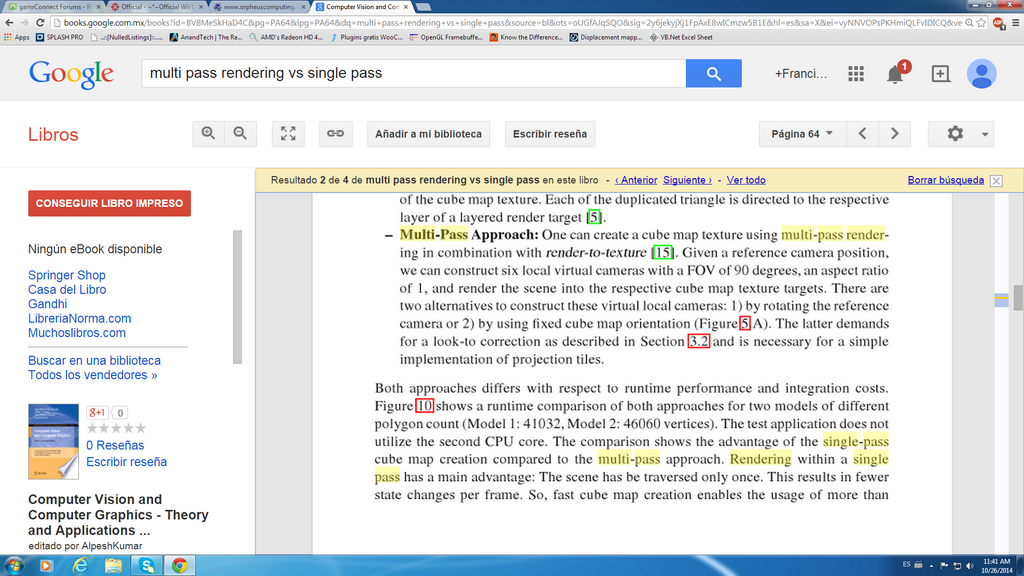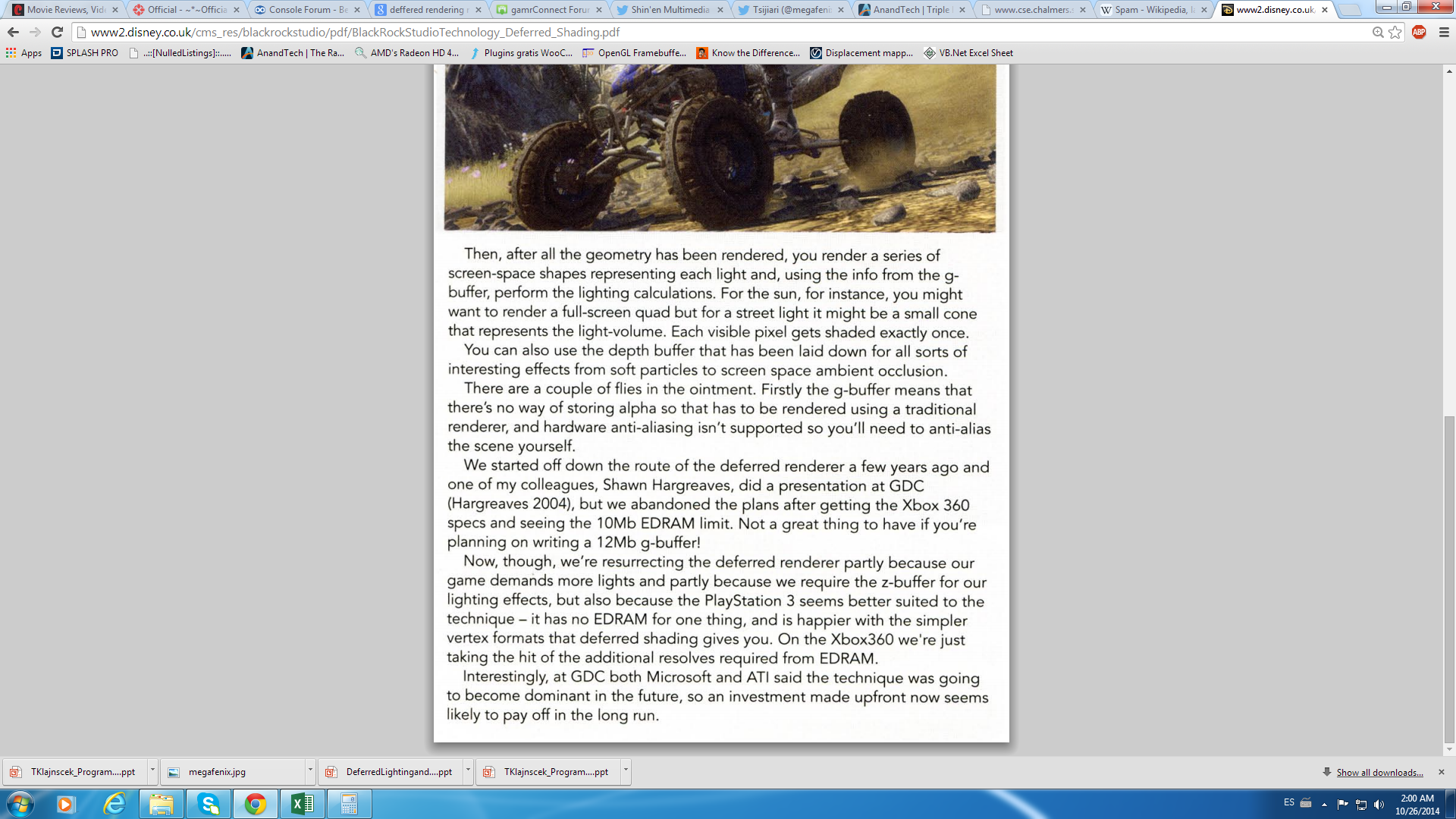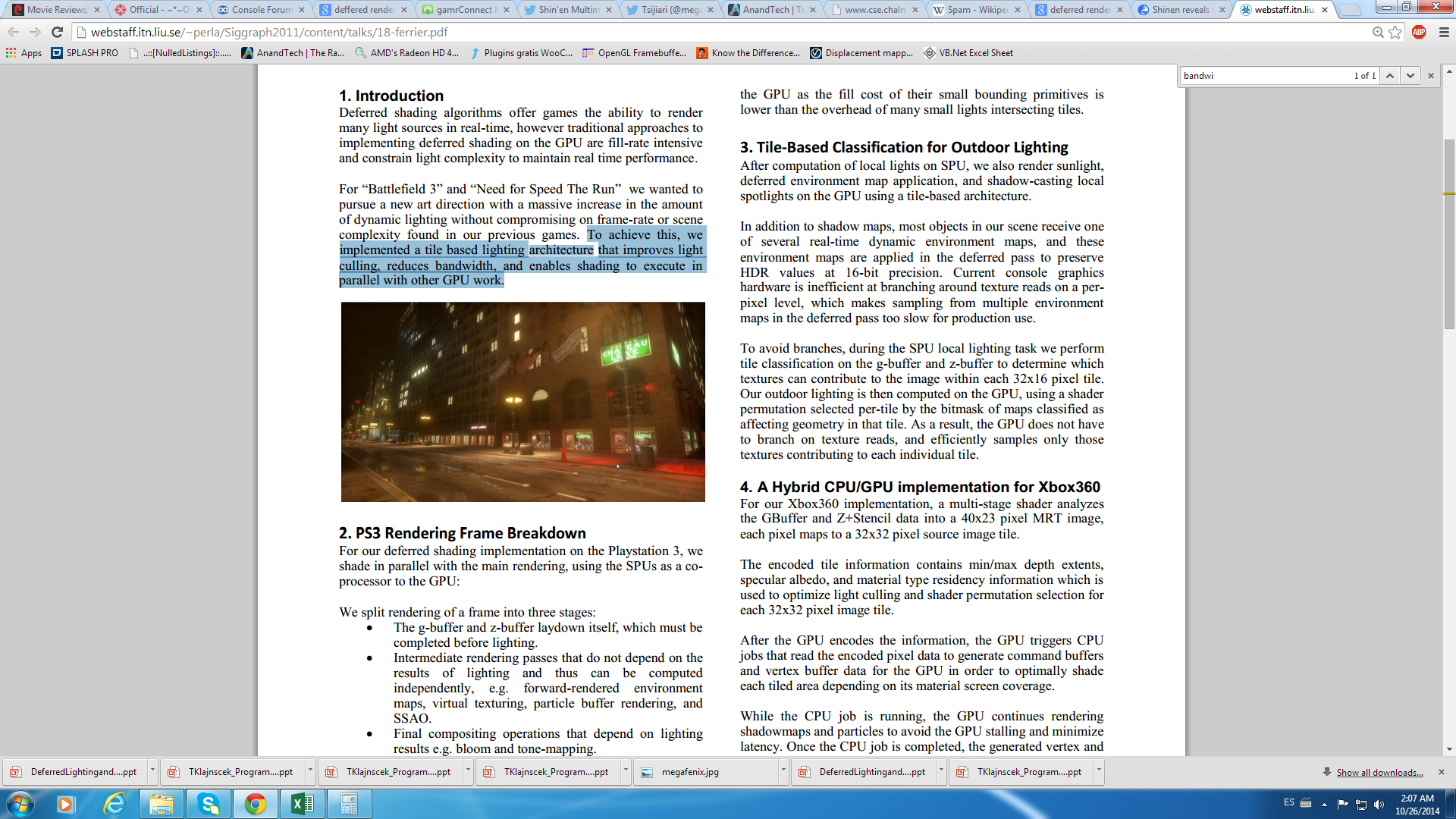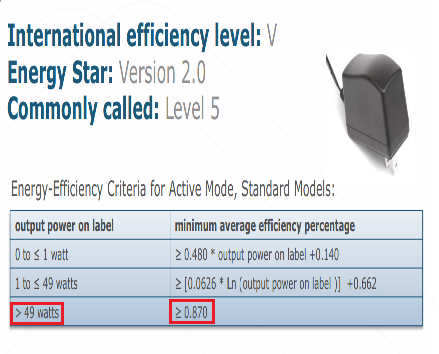Pemalite said:
The WiiU just requires far less trickery to achieve the same thing, but don't think that functionally it's superior, because it's not. |
its true that multipass is an option, but multipasses put to much work on the gpu comapred to single pass
http://www.orpheuscomputing.com/downloads/ATI-smartshader.pdf
"
The key improvements offered by ATI’s SMARTSHADER™ technology over existing hardware vertex and pixel
shader implementations are:
• Support for up to six textures in a single rendering pass, allowing more complex effects to be achieved
without the heavy memory bandwidth requirements and severe performance impact of multi-pass
rendering
Every time a pixel passes through the rendering
pipeline, it consumes precious memory bandwidth as data is read from and written to texture
memory, the depth buffer, and the frame buffer. By decreasing the number of times each pixel on
the screen has to pass through the rendering pipeline, memory bandwidth consumption can be
reduced and the performance impact of using pixel shaders can be minimized. DirectX® 8.1 pixel
shaders allow up to six textures to be sampled and blended in a single rendering pass. This
means effects that required multiple rendering passes in earlier versions of DirectX® can now be
processed in fewer passes, and effects that were previously too slow to be useful can become
more practical to implement
"

As you can read form the deveopers diary, they implemented deffered rendering using 5 spus of the ps3(there are only 8 and one of them is not available for games) and parallelism of the xbox 360 gpu+cpu work, the key adventage of g buffers is that you use few shader power but here ps3 and 360 had to put a lot pressure on the hardware to achieve it which almost nulls one of the adventages of the technique due to the lack of memory bandwidth. Since wii u edram has plenty of bandwidth it doenst need to use multipass or to much shader power to acheive the technique and has lot better performance. On 360 i could bet that besides the pressure on the gpu the 720p was done with a single buffer and not double buffering since that way you would reduce the memory consumption of the edram to 5MB and with some trickery use the rest for the deffered rendering(normally 12MB of edram would do but there are not there)
You can read here the problems developers went to implement deffered rendering on the last generation consoles, and obviously requirements like needing 5 spus out of the 8 existent ones is not very cheap, and using parallelism on the 360 gpu plus the help of the cpu isnt very cheap either

http://webstaff.itn.liu.se/~perla/Siggraph2011/content/talks/18-ferrier.pdf

In wii u you wont have to do this and the primary adventage of the deffered rendering will be available(use few shader power by trading bandwidth), triple framebuffers of 720p is only 10.8MB where in 360 10MB was barely enough for the 720p with double buffering, and as you can read in the first artlicle, developers wnated to use the deffered rendering on 360 but they needed 12MB of edram that were not present(thats why sometime later developers used the trick found in the second artlicle), in wiius case making some calculations its likely that a gbuffer would take out about 8.64MB of edram, combining that with the triple framebuffer is only about 19.44MB which leaves 12.6MB of edram plus the extra 3MB of faster edram and sram, thats why besides the triple framebuffering and gbuffer shinen still is able to fit some intermediate buffers there
As for the tiling technology, yea its something pretty cool and something tells me that shinen is using it in fast racing neo, looking at the terrain here
loos like the terrain is composed of tiles, i bet they used it since is impossible to fit the 4k-8k textures on the texture memory(even bc1 compression gives you 10MB storage for each texture) and so deviding the textures into tiles makes possible to use the texture cache or texture memory
"


















